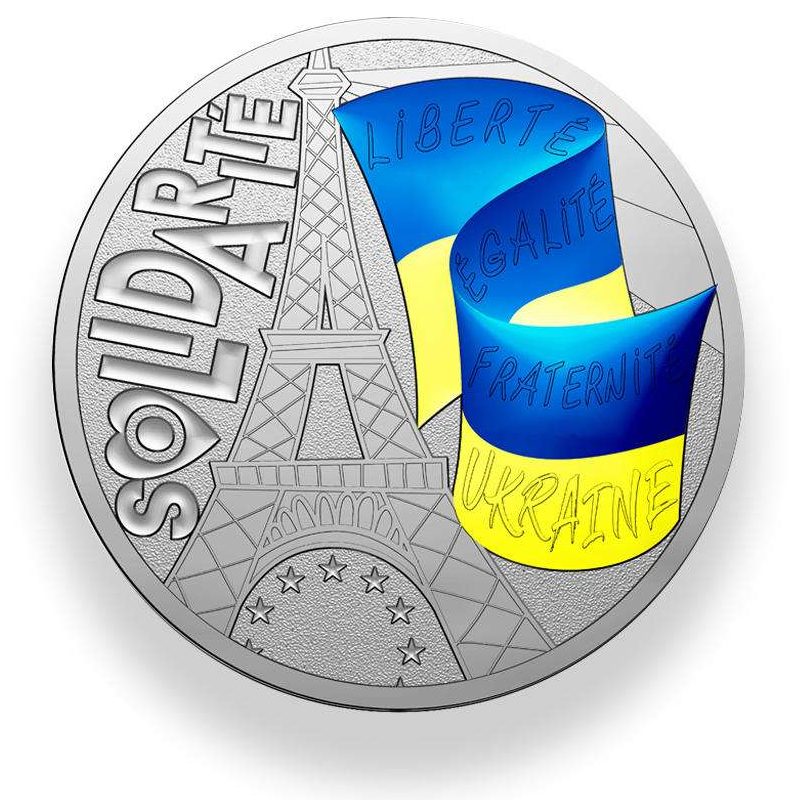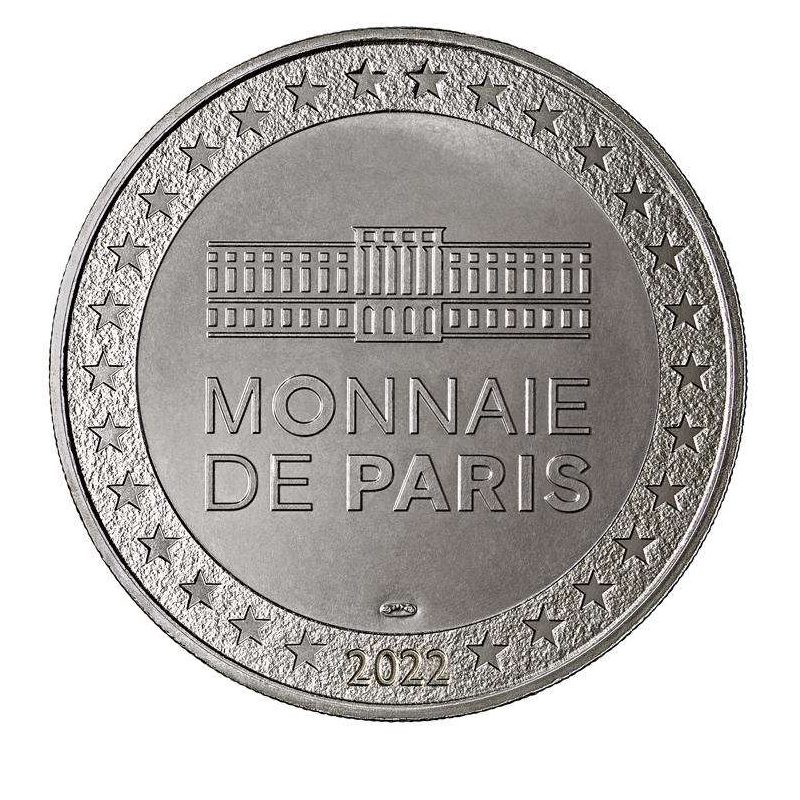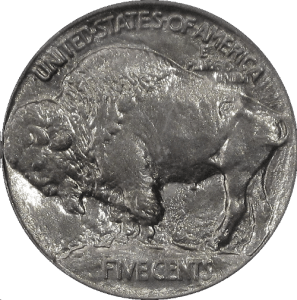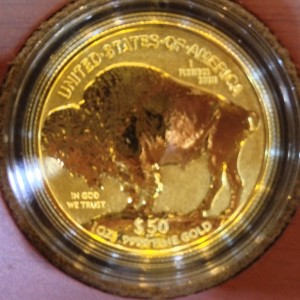Weekly World Numismatic News for March 6, 2022
In support of the Ukrainians fighting for their freedom, the Monnaie de Paris created the Solidarity with Ukraine Mini-Medal. The copper-nickel medal is 34mm in diameter and features the Eifel Tower next to a colored Ukrainian flag. On the Ukrainian flag is the French national motto “Liberté, Egalité, Fraternité.”
The reverse is described as having a common reverse used by the Monnaie de Paris with the 2022 date.
Each medal is 10€ (about $10.93), with 8€ donated to the French Red Cross for Ukrainian relief. The Monnaie de Paris does not say that they will ship to the United States or the costs. Mint officials will likely answer an inquiry on Monday.
If you purchase a medal from the Monnaie de Paris, remember that most credit card companies will charge a transaction fee for converting euros to dollars. Contact your credit card company to ask about the charges.
You can find the medal on the Monnaie de Paris website. The link will help you visit the page in English.
Please watch @coinsblog on Twitter and this post for updates on availability and shipping to the United States.
And now the news…
 → Read more at livescience.com
→ Read more at livescience.com
 → Read more at ottawa.ctvnews.ca
→ Read more at ottawa.ctvnews.ca
 → Read more at purewow.com
→ Read more at purewow.com
 → Read more at greekreporter.com
→ Read more at greekreporter.com
 → Read more at sfist.com
→ Read more at sfist.com
 → Read more at athensmessenger.com
→ Read more at athensmessenger.com
 → Read more at tbsnews.net
→ Read more at tbsnews.net
Weekly World Numismatic News for July 5, 2020
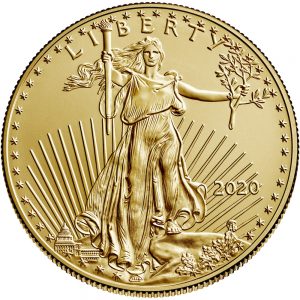 An article on Yahoo Finance asked the same question many have asked me: are the high premiums for physical gold a scam or a supply crisis?
An article on Yahoo Finance asked the same question many have asked me: are the high premiums for physical gold a scam or a supply crisis?
Gold is in high demand. As a safe haven for uncertain markets, the current markets have driven investors looking to have some stability in their portfolio. Some have suggested that the preppers, those who prepare themselves for a pending disaster, have been hoarding gold. A favorite among preppers is the small 1 gram through 10 gram gold bars because they will be more useful in daily transactions.
According to market analysts, the demand outpaced the available supply. The available supply is what is available to buy. The problem was that the pandemic caused many supply chains to break down with precious metals stuck somewhere and not being delivered to the buyers.
Another problem in the supply was the perception that the demand could not be satisfied after the West Point Mint’s temporary closing. Although the Philadelphia Mint stepped in to produce silver coins, the gold coin production stopped. Subsequently, there were conflicting reports on whether there was enough physical gold entering the supply chain or whether the gold was not getting to the sellers because of the pandemic.
During the shutdown, there were reports that gold mining slowed or stopped as travel became limited. It was also a problem when the major Swiss gold retailers had to shut down because of the quarantine since most as near the Italian border. While gold was available on the secondary market, perception became that if these retailers were closed, there would not be enough for the future. The uncertainty caused the gold buyers to increase their purchases.
One gold dealer reported that they had sufficient gold to satisfy the market but not in the form the customers wanted. The demand for American Gold Eagle exceeded their supply while the non-Swiss made bars were not selling. Customers that demanded Canadian Gold Maple Leaf coins were also disappointed but refused to buy gold coins from other European mints.
There is also no consistency between the premiums dealers charge. Some of the larger dealers use software to calculate the market price that examines other online sales to determine an average. Smaller dealers have said that they watch what the larger dealers are charging and adjust their premium below the average.
Nearly every analyst is bullish on the future of gold pricing. Being bullish on gold means that those watching the markets are not comfortable with the equities market’s stability. We can be in for a bumpy ride.
And now the news…
 → Read more at finance.yahoo.com
→ Read more at finance.yahoo.com
 → Read more at toledoblade.com
→ Read more at toledoblade.com
 → Read more at timesargus.com
→ Read more at timesargus.com
 → Read more at edmonton.ctvnews.ca
→ Read more at edmonton.ctvnews.ca
 → Read more at yorkshirepost.co.uk
→ Read more at yorkshirepost.co.uk
 → Read more at pressrepublican.com
→ Read more at pressrepublican.com
James Earle Fraser and A Controversial Statue
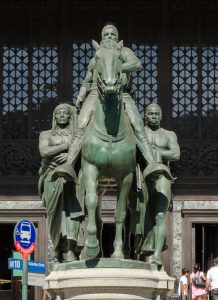
Equestrian Statue of Theodore Roosevelt at the American Museum of Natural History in New York City. (Wikipedia)
Since Roosevelt’s death, Fraser was asked to design three different statues honoring the 26th President with themes picked by the sponsors. The theme was chosen for this statue by the Roosevelt Memorial Association. The statue would honor Roosevelt and the indigenous people in the Badlands of South Dakota and the Africans he met during his post-presidency safari. They were meant to be allegorical figures, not real people.
Theodore Roosevelt was a fascinating personality. TR was fond of the Badlands area, the area of the Dakota territory around the Little Missouri River. In his autobiography, Roosevelt admitted that he used his trips to the Badlands as an escape. The trips started after the death of his first wife, Alice, who died within days of giving birth to their only child.
Roosevelt stopped talking about Alice after her death. Until he wrote his autobiography, the last statement Roosevelt made about Alice was in his diary, where he wrote, “The light has gone out of my life.” Some scholars believe that Roosevelt’s trips to the Badlands were his attempt to combat depression or post-traumatic stress following Alice’s death.
Following his presidency, Roosevelt went on a safari in Africa and a trip through Europe. In Africa, Roosevelt’s safari was a research project sponsored by Andrew Carnegie that would bring back specimens for the Smithsonian Institue and the American Museum of Natural History.
His guide through Africa was a British national RJ Cunninghame. Aside from his knowledge of the region, Cunninghame knew many natives who can lead them around the land. In each of the countries, the local guides were natives.
In his autobiography, Roosevelt would credit the native people for helping on his trips. It was clear that Theodore Roosevelt would not have been associated with these people in other areas of his life. Still, his writing demonstrated a lot of respect for their guidance.
Fraser was consulted many times by the Roosevelt Memorial Association. It was due to his being an accomplice to Roosevelt’s “pet crime,” the redesign of the nation’s coinage. Fraser, who was an assistant to Augustus Saint-Gaudens, understood the imagery the President wanted that became the inspiration for the Buffalo Nickel.Frasier’s style was called Beaux-Arts, which relied on neoclassical-like images. Frasier was the designer of the Buffalo Nickel and other commemorative coins. Frasier’s style was called Beaux-Arts, which relied on neoclassical-like images. Frasier took Beaux-Arts to a new level by studying his subjects’ history and incorporating them into the imagery.
All of Frasier’s work has many elements that have to be studied to be appreciated. Numismatists can see his attention to detail by studying a Type 1 Buffalo Nickel with a loupe. The detail gives the coin a lot of character that makes it an appealing collectible. When the U.S. Mint tried to recreate the design for the 2001 commemorative coin, collectors were not satisfied with the flatter image.
The 24-karat Gold Buffalo coin is a good representation of Frasier’s Type 1 Buffalo Nickel design. John Mercanti’s execution of Fraser’s design is phenomenal.
- 1913 Buffalo Nickel Type 1 Reverse
- Reverse of the 2013-W American Buffalo gold reverse proof
Many of the statues in tribute to the 26th President show Roosevelt on a horse. Fraser was consulted about two other Roosevelt memorial statues. The statue Fraser proposed that is now on Roosevelt Island in New York’s East River was similar in design to the Equestrian Statue at the Museum of Natural History. The other was a statue to be part of the Theodore Roosevelt Island in the Potomac River near Georgetown. It depicted Roosevelt on a horse without the guides. Fraser died before funding for the statue was realized.
Fraser’s image for the statue was clear. It was the two indigenous people working to support Roosevelt’s adventures. These are not racist images, even when it has been badly misinterpreted by some media who call the person to Roosevelt’s left an African-American.
Unfortunately, the current society has lost the ability to reason beyond the surface at allegorical symbols that are supposed to honor rather than demean. It takes a higher sense of forethought to understand what is being depicted. A value that is lacking today. Understanding the history of the man and the imagery offered by Fraser something to be admired. It is a work of art that needs to be preserved and not run over by a politically correct freight train.
Weekly World Numismatic News for June 28, 2020
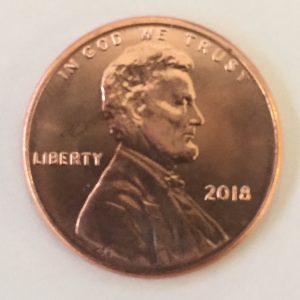 Somewhere along the line, logic and reality have not reconciled the meme that cash is dead because everyone uses credit cards. Although there has been an increase in credit card usage because of the COVID-19 pandemic and quarantine orders, banks and retail outlets have been reporting a shortage of cash.
Somewhere along the line, logic and reality have not reconciled the meme that cash is dead because everyone uses credit cards. Although there has been an increase in credit card usage because of the COVID-19 pandemic and quarantine orders, banks and retail outlets have been reporting a shortage of cash.
For the most part, the U.S. Mint coin manufacturing processes have been fully operational during the pandemic except closing West Point briefly. The coin factory is mostly automated and does not require many workers. The U.S. Mint reports that the offices that include in the engravers are working from home, but the manufacturing continues.
But reports from the St. Louis Federal Reserve noted that even with the reduction in foot traffic, the rate of people paying with cash remained steady. The San Francisco Federal Reserve noted that the rise in credit card use coincides with the increase in online shopping.
The U.S. Mint is not the cause of supply chain problems. The problems are within the Federal Reserve and how they operate their coin storage. When Federal Reserve Chairman Jerome Powell discussed the coin shortage, he also said that the problems magnified when the quarantine impacted the logistics companies that move the coins from place to place.
Like many things, congress took the wrong message from Powell and prompted what may be a necessary action but for the wrong reasons. Sens. Mike Enzi (R-WY), and Maggie Hassan (D-NH) introduced the Coin Metal Modification Authorization and Cost Savings Act (S. 4006) to allow the U.S. Mint to change the metal used in your change.
While the senators are patting themselves on the back for looking like they are doing something, changing coning metals will not help. Although the U.S. Mint has studied alternative metals, several steps will take many years to complete. Canada and the United Kingdom have to change coins and coining metals in recent years. Both countries made the transition in four years and continued to have problems.
Another lesson learned is that to help Canada and the U.K. to make the transition, their respective central banks demonetized the old coins. The United States does not demonetize its coinage. Even with significant media coverage, the Bank of England reports over £1 million of demonetized coins in the public’s hands.
When the United States transitioned from silver to base metals, a six-year transition did not go as planned. We learned later that the U.S. Mint continued to produce silver coins in 1965 and 1966 with 1964 dates to ease market pressures.
Changes to coining metals may be necessary. Over the last ten years, the U.S. Mint has seen seignorage reduced as the price of copper and nickel rise. But to tie the change in metals to the pandemic is a very congressional thing to do.
And now the news…
 → Read more at valuewalk.com
→ Read more at valuewalk.com
 → Read more at thehustle.co
→ Read more at thehustle.co
 → Read more at finance.yahoo.com
→ Read more at finance.yahoo.com
 → Read more at highlandcountypress.com
→ Read more at highlandcountypress.com
 → Read more at grocerydive.com
→ Read more at grocerydive.com
Recognizing History on United States Currency
The Treasury Department said that the $10 note was next on its schedule to update the currency to add Advanced Counterfeit Deterrence (ACD). The ACD Steering Committee, an inter-agency group that monitors several factors that go into the maintenance of U.S. currency, suggested the change. The committee also wanted to add features that will help increase accessibility for the visually impaired as part of the court-mandated Meaningful Access Program. Treasury reports that the new note “will include a tactile feature that increases accessibility for the visually impaired.”
Others had recommended replacing the portrait of President Andrew Jackson on the $20 note with a woman. Aside from 20 being a significant number in this celebration, the groups targeted Jackson because of his history of wanton disregard for life and liberty. During the War of 1812, Jackson led U.S. Army troops against native tribes working with the British against the United States to regain the lands taken following the colonies’ independence. History records that Jackson’s troops were brutal against the native tribes on his orders, killing them rather than taking prisoners.
After beating back the British in the Battle of New Orleans, Jackson declared martial law in New Orleans and used his troops to enforce martial law. Jackson ordered his troops to arrest a local magistrate because he sided with a newspaper reporter who wrote negatively about Jackson’s rule. Jackson also had members of the local militia who sided with the British executed without trial.
As president, Jackson’s lobbied Congress passed the Indian Removal Act because he wanted the Native American tribes to relocate to the western side of the Mississippi River. Jackson disregarded the letter of the law and ratified treaties to uproot tribes and march them away. It was called “Trail of Tears.” It forced the relocation of Cherokee, Muscogee, Seminole, Chickasaw, and Choctaw nations from their ancestral homelands in the southeast to an area west of the Mississippi River. It is considered the most violent and brutal act against the native tribes in United States history.
To have Jackson’sJackson’s portrait on the United States currency is also a bit ironic. Jackson was against the concept of a central bank and refused to renew the charter of the Second Bank of the United States. He vetoed the bill to continue its charter. After winning the election in 1833, Jackson withdrew all of the country’s funds from the bank, limiting its ability to conduct business. He gave power to local banks to lend money and issued the Specie Circular, an executive order requiring government transactions in gold and silver coins (specie).
Although all of the men whose portraits appear on United States currency are very flawed people, Jackson is the worst.
Eventually, Secretary Lew sided with the activists and announced that Harriett Tubman would replace Jackson on the $20 Federal Reserve Note.
Lew resigned as the 76th Secretary of the Treasury on January 20, 2017, with the inauguration of a new administration. Steven T. Mnuchin became in as the 77th Secretary of the Treasury on February 13, 2017.
Mnuchin did not immediately interfere with the Bureau of Engraving and Printing’s efforts to redesign the $20 FRN. As the work continued, the BEP also continued to work on additional anti-counterfeiting measures for U.S. currency. Specifically, the BEP was looking into changes that would first impact the $10 note followed by the $5 bill.
The paper $5 note was a more significant focus for the BEP. In working with the U.S. Secret Service, they were finding that many counterfeiters were using bleaching products to remove the ink from the paper to use it to print higher denominations, predominantly $20 bills. One internal report suggested that the criminal would see a net gain of $14 for each $20 note they could produce.
Although it costs more to counterfeit $20 bills this way, it is a lower risk for the criminal. Few people pay attention to the problem, and those that do find that the currency passes the iodine pen test.
Interference from Mnuchin came after his first three months in office. It started with a question from a reporter who asked the president about the change. During a subsequent cabinet meeting, the president said something to Mnuchin about the change. Mnuchin agreed to do something without raising concerns.
Rather than stopping the process, Mnuchin diverted funds from the development of the proposed change in portrait. He was able to hide the change from the public because of the nature of the Treasury’s budgetary process.
In response to news reports, BEP Director Len Olijar issued the following statement via the bureau’s website saying that “BEP was never going to unveil a note design in 2020.” That was not the policy of the Treasury Department and the BEP when Secretary Lew announced the change.
Without interference from the current administration, Andrew Jackson, whose policies and actions led to the murder of many Native Americans, would have been replaced by Harriett Tubman. An honor to someone who saved lives and a tribute to 100 years of Women’s Suffrage.
Weekly World Numismatic News for June 21, 2020
 What is likely the first coin show to scheduled since the shutdowns for the COVID-19 pandemic was approved this week. The Vegas Pop Up Coin Show will be held on July 2-5 at the Palace Station Hotel and Casino.
What is likely the first coin show to scheduled since the shutdowns for the COVID-19 pandemic was approved this week. The Vegas Pop Up Coin Show will be held on July 2-5 at the Palace Station Hotel and Casino.
According to the announcement, the show will have only 15 dealers and no more than 25 people staffing dealer tables. The dealers will occupy 24-foot booths to ensure that there is a six-foot distance between people.
Organizers will control the entry to ensure that no more than 50 people are in the room at the same time. All of these measures comply with Nevada’s social distancing regulations.
The organizer appears to have gone to great lengths to organize a coin show and meet the health requirements of the time. If there are any Coin Collectors Blog readers attend this show, I would be happy to post your report. Just contact me with your information.
And now the news…
 → Read more at phys.org
→ Read more at phys.org
 → Read more at thisismoney.co.uk
→ Read more at thisismoney.co.uk
 → Read more at 8newsnow.com
→ Read more at 8newsnow.com
 → Read more at news.yahoo.com
→ Read more at news.yahoo.com
 → Read more at washingtonpost.com
→ Read more at washingtonpost.com
 → Read more at themarketherald.com.au
→ Read more at themarketherald.com.au
